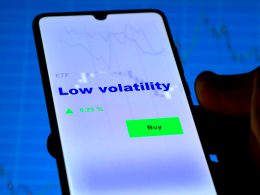by Todd Schomberg, Invesco Canada
While global economies are slowly reopening, we see the COVID-19 crisis as only magnifying the slow growth and low inflation environment we were in prior to the pandemic, with interest rates remaining low for an extended period.
Swift, unprecedented action by central bank around the world – interest rate cuts, assets purchases and lending facilities – pumped trillions of dollars of monetary stimulus into economies around the world. I believe central banks will likely continue to provide powerful tailwinds to the fixed income market.
As such, we maintain our theme of “follow the central banks” in our portfolios. We want to buy what they are buying: investment grade corporate bonds, agency mortgages, municipal bonds and those structured securities that qualify under the Term Asset-Backed Securities Loan Facility (TALF).
Valuations within investment grade credit and select securitized assets remain attractive and should benefit from a one-two punch of economic reopening and central bank purchases. Major central banks such as the Federal Reserve (Fed), Bank of Canada (BOC) and European Central Bank (ECB) have all committed to buying more investment grade credit, which provides not only a backstop, but also potential future price appreciation.
Corporate bonds
The Fed can purchase up to US$750 billion in corporate bonds, including a small amount of high-yield bond exchange traded funds (ETFs) and bonds that have been downgraded from investment grade.1 The capacity of the ECB’s Pandemic Emergency Purchase Program (PEPP) stands at €1.35 trillion, which allows for purchases of sovereign and corporate debt.2
Many investment grade corporate issuers have built cash positions by ending share buybacks, cutting dividends and issuing more than US$1 trillion of debt year to date.3 As companies solidify their balance sheets, this should benefit debt holders and allow the issuers to successfully navigate what we expect will be a “U-shaped” economic recovery. With roughly US$11 trillion in negative-yielding debt globally,4 we believe North American investment grade bonds will attract foreign buyers. With history as a guide, as we came out of the global financial crisis, investment grade credit generated total returns of 18.7% in 2009, followed by returns of 9%, 8.1%, and 9.8% in 2010, 2011, and 2012. 5
Since the crisis the Fed has increased its balance sheet by over US$3 trillion6 while the ECB’s balance sheet is nearly €1 trillion larger7 – and both are growing. In addition to asset purchases, central banks slashed overnight lending rates. Both the Fed and Bank of Canada have taken their overnight lending rate to a range of 0-0.25% and will likely keep it there for an extended period.8 However, the Fed stresses no intention to take the rate negative, saying that it believes negative rates pose a potential risk to the banking systems.
Besides, both central banks have ample ammunition via balance sheet expansion as an alternative. I believe a flood of stimulus and a successful reopening of the economy should help to keep central bank rates positive with slightly steeper yield curves, but that they will remain low and rangebound for an extended period.
The Fed is also exploring yield curve control, in which it would select certain maturity buckets to anchor rates within a narrow range. We have shortened duration somewhat on the long end of the yield curve, however we aim to maintain adequate duration to provide a hedge in times of volatility.
At some point far down the road, I believe central banks will have to begin shrinking the money supply, but I don’t think that is anywhere on the near-term horizon. Until we see a significant uptick in growth and inflation, central banks are poised to keep the spigot wide open with extremely accommodative policies.
Currency concerns
With the flood of U.S. dollars into the market both via asset purchases and US dollar liquidity swap lines, I expect a slight depreciation in the USD vs. other currencies including CAD. Still, we seek to limit major foreign exchange risks in the portfolio by hedging all non-Canadian denominated assets back into CAD.
With low global growth, low inflation and a large supply of negative yielding debt globally, I believe that high quality fixed income, particularly in North American assets, should be in the sweet spot of the fixed income market. We’ve built the portfolio to take advantage of this by adding investment grade credit and other assets that central banks and foreign buyers are purchasing.
In addition, we always maintain a select portion of Invesco Global Bond Fund in global government bonds to help mitigate times of volatility. We’ve positioned the Fund with a goal of providing strong income generation in the current environment while also being a ballast in the portfolio to help protect investors in times of stress.
*****
1 Source: U.S. Federal Reserve, as at April 9, 2020. https://www.federalreserve.gov/newsevents/pressreleases/files/monetary20200409a5.pdf
2 Source: European Central Bank, as at June 4, 2020. https://www.ecb.europa.eu/press/pr/date/2020/html/ecb.mp200604~a307d3429c.en.html
3 Source: Bloomberg, as at May 28, 2020. https://www.bloomberg.com/news/articles/2020-05-28/fed-fueled-borrowing-binge-hits-1-trillion-mark-at-record-rate
4 Source: NASDAQ, as at April 1, 2020. https://www.nasdaq.com/articles/shrinking-finally-negative-yielding-debt-pile-declines-2020-04-01
5 Source:Bloomberg Barclays US Corporate Bond Index, in USD, as at August 8, 2017. https://data.bloomberglp.com/indices/sites/2/2016/08/2017-08-08-Factsheet-US-Corporate.pdf
6 Source: U.S. Federal Reserve, as at June 10, 2020.
7 Source: European Central Bank, as at June 9, 2020.
8 Sources: U.S. Federal Reserve, as at March 15, 2020 and Bank of Canada, as at March 27, 2020.
Glossary
An investment grade bond is generally recognized as such if its credit rating is BBB- or higher (Standard & Poor's) or Baa3 or higher (Moody's). These bonds are judged by the rating agency as likely to meet the associated payment obligations.
Agency securities are low-risk debt obligations that are issued by U.S. government-sponsored entities (GSEs) and other federally related bodies. Agency mortgage backed securities are issued by government-sponsored enterprises such as Federal National Mortgage Association (Fannie Mae), Federal Home Loan Mortgage Corporation (Freddie Mac), and Government National Mortgage Association (Ginnie Mae).
The U.S. Federal Reserve established the Term Asset-Backed Securities Loan Facility (TALF) on March 23, 2020 to support the flow of credit to consumers and businesses. The TALF will enable the issuance of asset-backed securities (ABS) backed by student loans, auto loans, credit card loans, loans guaranteed by the Small Business Administration (SBA), and certain other assets.
The yield curve plots interest rates, at a set point in time, of bonds having equal credit quality but differing maturity dates to project future interest rate changes and economic activity.
Swap lines are used by central banks to provide liquidity of their currency to another country’s central bank.
The opinions referenced above are those of the author as of June 10, 2020. These comments should not be construed as recommendations, but as an illustration of broader themes. Forward-looking statements are not guarantees of future results. They involve risks, uncertainties and assumptions; there can be no assurance that actual results will not differ materially from expectations.
† Invesco Fixed Income (IFIn ) is a unit comprising Invesco Senior Secured Management, Inc. of New York, U.S.; Invesco Advisers, Inc. of Atlanta, U.S.; Invesco Asset Management Ltd. of London, U.K.; and Invesco Canada Ltd. of Toronto, Canada
Commissions, trailing commissions, management fees and expenses all may be associated with mutual fund investments. Mutual funds are not guaranteed, their values change frequently and past performances may not be repeated.
This does not constitute a recommendation of any investment strategy or product for a particular investor. Investors should consult a financial advisor/financial consultant before making any investment decisions.
Diversification does not guarantee a profit or eliminate the risk of loss.
This post was first published at the official blog of Invesco Canada.













